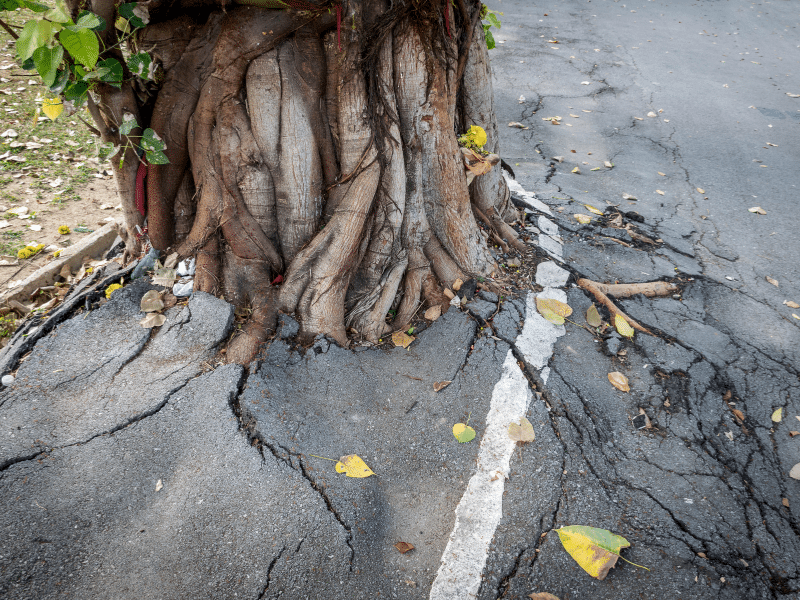Trees are a valuable asset to any property, offering shade, beauty, and environmental benefits. However, beneath the surface, their intricate root systems can have significant impacts, both positive and negative, on your home and landscape. Understanding how tree roots grow and interact with their surroundings is crucial for homeowners to prevent damage and harness their benefits. This article delves into the science of tree root systems, their potential effects on your property, and how to manage them effectively:
The Nature of Tree Roots
- Root Types & Roles: Trees primarily have either a deep, central taproot (like oaks) for strong anchorage, or a widespread, shallower fibrous root system (like maples) efficient at surface water absorption. Regardless of type, roots anchor the tree, absorb water and nutrients, and store energy.
- Shallow Operators: Most tree roots (85-99%) inhabit the top 12-24 inches of soil, where oxygen and water are plentiful.
- Wide Reachers: Roots spread much wider than the tree’s canopy, often 2-3 times the branch spread, seeking favorable conditions.
- Opportunistic Growth: Roots don’t actively “seek” water but will thrive and proliferate when they encounter moisture, oxygen, and nutrients.
How Tree Roots Affect Your Property
Foundation Damage
- Soil Moisture Depletion: Tree roots can extract moisture from clay soils beneath foundations, leading to soil shrinkage and potential foundation settling or cracking.
- Physical Pressure: Roots exerting pressure against foundations can cause structural damage over time.
Plumbing and Sewer Line Intrusion
Root Infiltration: Roots can infiltrate sewer lines through cracks or joints, leading to blockages, backups, and potential pipe rupture.
Damage to Pavements and Driveways
Surface Disruption: Roots growing near the surface can lift and crack pavements, driveways, and sidewalks, creating tripping hazards and requiring costly repairs.
Landscape Disruption
Soil Displacement: Expanding root systems can displace soil, affecting lawns, gardens, and other plantings by absorbing available water and nutrients.
The Benefits Roots Bring
Tree roots also offer significant advantages:
- Soil Stability & Erosion Control: Their network binds soil, reducing erosion from wind and rain, especially on slopes.
- Improved Soil Health: Roots create channels, improving soil aeration and water infiltration.
- Water Management: They absorb excess groundwater, and some species can even redistribute water in the soil profile.
Preventive Measures and Solutions
Proper Tree Selection and Placement
- Species Selection: Choose tree species with less aggressive root systems, especially when planting near structures.
- Safe Distances: Plant trees at a safe distance from buildings, driveways, and underground utilities to minimize potential root interference.
Installation of Root Barriers
- Physical Barriers: Installing root barriers can redirect root growth away from structures and utilities, preventing potential damage.
Regular Inspections & Professional Help:
- Periodically check foundations, basements, and paved areas for signs of root damage.
- If concerned, consult a certified arborist. They can assess risks, advise on management, and perform services like careful root pruning. Root pruning should be a last resort and done by a professional, as improper cutting can harm or destabilize the tree.
Tree roots are a powerful natural force. By understanding their growth, potential impacts, and benefits, and by implementing sensible management strategies, homeowners can minimize risks and continue to enjoy the invaluable presence of trees on their property.
Concerned about tree roots affecting your foundation, driveway, or sewer lines? Don’t wait until minor issues become major expenses. At Madd Beaver Tree Services, we specialize in safe tree removal and preventive solutions tailored to protect your home and landscape.

